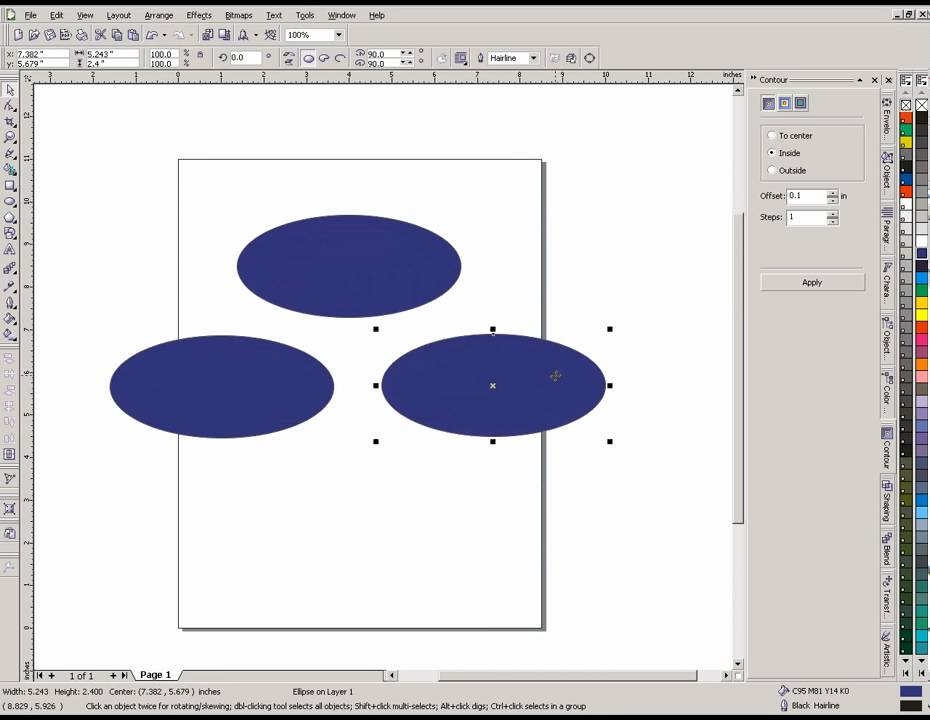
Introduction:
CorelDRAW, a powerhouse in graphic design, provides designers with a rich array of tools to bring their creative visions to life. Among these tools, the ability to create copies of an object at a specified position stands out as a fundamental skill for achieving precision and consistency in design. This extensive guide is dedicated to unraveling the intricacies of replicating objects at specified positions in CorelDRAW, catering to both beginners seeking foundational insights and experienced designers looking to refine their skills.
I. Understanding the Need for Specified Position Replication:
- Design Precision: Replicating objects at specified positions is crucial for achieving design precision. This skill allows designers to place copies with accuracy, maintaining a cohesive and intentional layout.
- Consistency in Layouts: When working on projects that require consistent spacing or alignment, creating copies at specified positions ensures a uniform and visually appealing design. This is particularly important in branding, typography, and layout design.
II. Basic Techniques for Positional Replication:
- Selecting the Object: Begin by selecting the object you intend to replicate. Utilize the Pick tool to click on the object, ensuring it is the active selection in the design workspace.
- Accessing the Copy Command: Navigate to the Edit menu and locate the “Copy” option. Alternatively, use the keyboard shortcut “Ctrl + C” to copy the selected object. This initiates the process of placing a duplicate on the clipboard.
- Defining the Specified Position: Before pasting the copy, navigate to the desired position in the drawing using the Pick tool. Ensure precision by using grid snapping, guidelines, or numeric coordinates to define the specified position accurately.
III. Pasting at a Specified Position:
- Accessing the Paste Command: Navigate to the Edit menu once again and locate the “Paste” option. Alternatively, use the keyboard shortcut “Ctrl + V” to initiate the paste command. The copied object is now ready to be placed at the specified position.
- Precision Adjustment: After pasting, use the transformation handles or the Object Properties docker to fine-tune the position, size, or orientation of the pasted copy. This step ensures the object aligns perfectly with the specified position.
IV. Navigating the Object Manager for Positional Replication:
- Understanding the Object Manager: The Object Manager is a powerful organizational tool that displays the hierarchy of objects within the document. Utilize it for efficient replication, especially in complex designs with multiple layers and groups.
- Right-Click Options in Object Manager: Right-click on the object in the Object Manager to access options for duplication. Choose “Copy” and then “Paste” to create a copy at a specified position, maintaining control over the organization of objects within the document.
V. Advanced Techniques for Positional Replication:
- Using Duplicate Special: CorelDRAW offers a powerful “Duplicate Special” feature that allows designers to create precise copies at specified distances and angles. Access this tool from the Edit menu, providing advanced options for replication.
- Interactive Duplication with PowerClip: Leveraging the interactive features of PowerClip, designers can replicate objects within containers dynamically. This method is particularly useful for creating intricate designs with repeated elements.
VI. Troubleshooting and Best Practices:
- Checking Clipboard Contents: Before pasting, verify the content on the clipboard. If the clipboard contains unwanted or outdated content, it may lead to unintended results. Clear the clipboard or copy the desired object to ensure accurate replication.
- Undo/Redo Functionality: The Undo (Ctrl + Z) and Redo (Ctrl + Y) commands in CorelDRAW provide a safety net for reverting actions. If the replication is undesired or if you wish to experiment with different variations, utilize these commands to navigate through the editing history.
VII. Collaboration and Positional Replication:
- Sharing Design Elements: In collaborative design projects, share duplicated elements with team members. Ensure that collaborators have access to the same design assets, fostering consistency across the project.
- Version Compatibility: When replicating objects between different versions of CorelDRAW, be mindful of version compatibility. Certain features or formatting may not transfer accurately between versions, impacting the design’s integrity.
VIII. Documenting Replication Processes:
- Creating Tutorials and Guides: For educational or collaborative purposes, document the process of replicating objects at specified positions. Create tutorials, design process documents, or annotations within the design file to guide team members or future reference.
- Maintaining Design Consistency: When replicating objects for repeated use, ensure design consistency by adapting colors, styles, and formatting to align with the overall design aesthetics. This practice contributes to a cohesive visual experience.
Conclusion:
In conclusion, the ability to create copies of an object at a specified position in CorelDRAW is a fundamental skill that enhances precision and design consistency. As designers navigate through the step-by-step guide and explore advanced techniques, they gain a deeper understanding of the tools available for precise and dynamic object replication. By incorporating troubleshooting tips, best practices, and collaborative strategies, designers can navigate the intricacies of replicating objects with confidence and precision. Embrace the versatility and creative potential that positional replication offers in CorelDRAW, and let your designs flourish with seamlessly replicated elements.